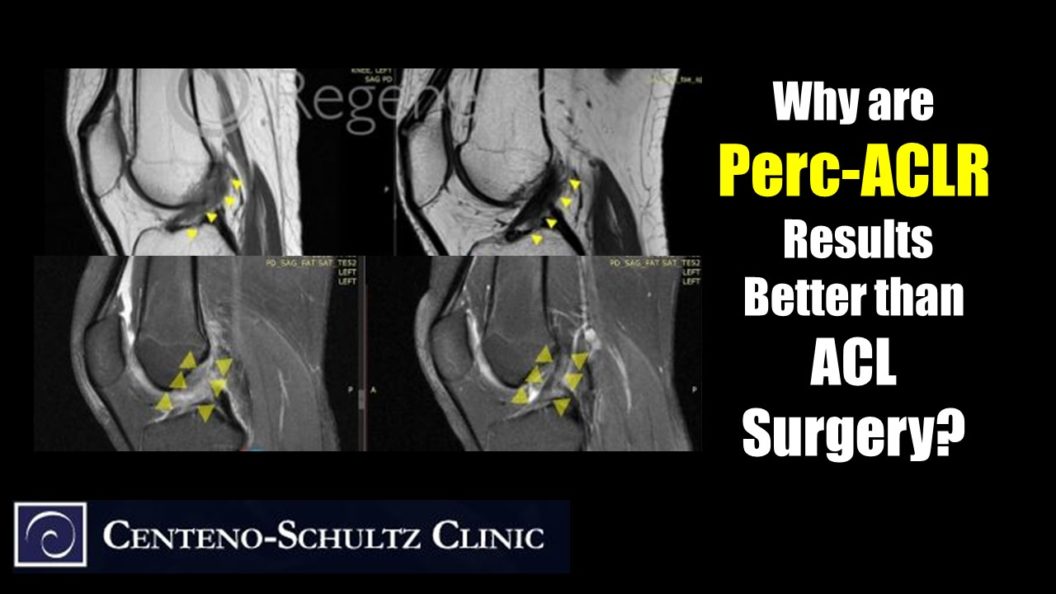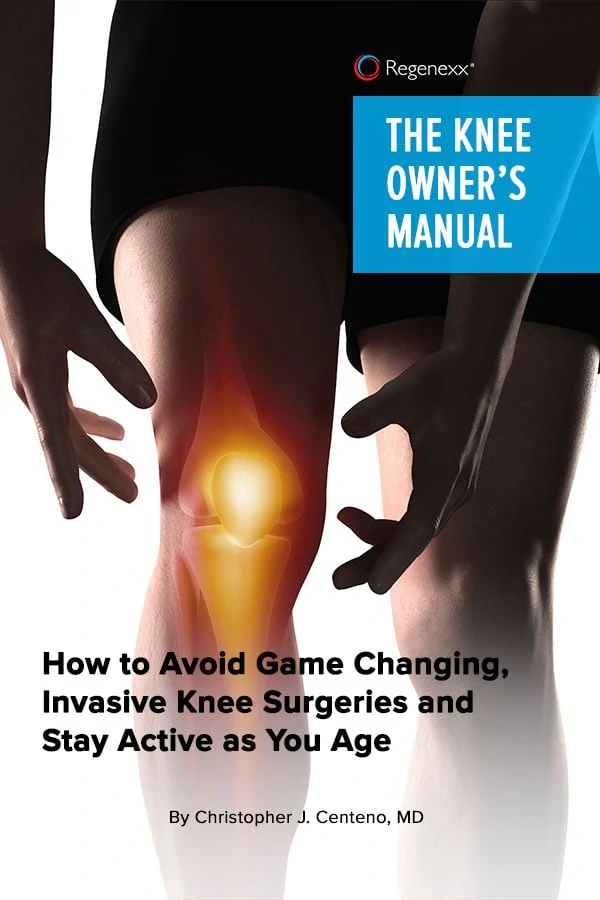When anterior cruciate ligament (ACL) surgery first came on the scene, it was big news, especially for athletes in sports that are notorious for torn ACLs. However, since it involves replacing a native ligament with a poor copy in a highly invasive procedure, it was certain to be replaced at some point. Why?
When a patient’s own ligament is retained, this allows the fibers to remain aligned in the direction of maximum force. It also retains position sensors that provide signals for knee muscles from the central nervous system, something a copy can’t pull off. Surgery involves replacing the ACL with a patient-harvested or cadaver tendon and trying to make it impersonate and function like the patient’s ligament, something it’s not very good at doing.
Well, fortunately, times have changed, and with the advent of interventional orthopedics, there are now nonsurgical alternatives for ACL tears on the scene. Yesterday, we covered types of ACL tears and injection techniques. Today, we’re expanding on the perc-ACLR procedure.
What Is Perc-ACLR?
In interventional orthopedics, a perc-ACLR is a percutaneous ACL repair. Don’t confuse this with the traditional orthopedics highly invasive surgery called ACL reconstruction (ACLR). The two are similar only in that they both treat ACL tears, but beyond that, they are much different as the perc-ACLR does not require surgery.
Our clinic invented and named the perc-ACLR procedure. The perc part of this terminology denotes that this is an injection procedure. The procedure involves injecting via precise fluoroscopic guidance the patient’s own high-dose bone marrow concentrate (HD-BMC) stem cells into the ACL. Rather than cutting out the damaged native ACL and replacing it with a substitute (a harvested tendon from the hamstrings or knee cap or a cadaver graft), the perc-ACL procedure preserves and repairs the native ligament.
So why would you want to preserve and repair your native ligament rather than resecting it and having a substitute installed? The 25-minute video below is long but is chock-full of answers to this question as well as cited research and is well worth your time if you are considering ACL surgery:
Who Can Perform a Perc-ACLR Procedure?
The perc-ACLR procedure can only be performed by interventional orthopedic physicians highly skilled and extensively trained on the technique. Additionally, to be considered a candidate for the procedure, patients must meet specific measurement criteria based on imaging. The good news, however, is that this accounts for about 70% of all patients who would otherwise be getting an ACLR surgery.
How We Determine Candidacy for Perc-ACLR
Being a Regenexx network provider, we utilize the Regenexx candidacy tool to determine candidacy for our perc-ACLR procedure. Not only does it determine candidacy, but this tool provides the provider with a candidacy level for each patient, rating the patient as either a good, fair, or poor candidate for the perc-ACLR procedure. This is important for patients as this allows them to know up front where they fall on the scale and aids the patient and physician in making the right decision about treatment.
The candidacy tool not only helps with candidacy decision making using the patient’s own individual indicators (offset measurement, femoral width, and ACL morphology) entered into the program but also pulls from our advanced patient registry outcome data, through the Interventional Orthopedics Foundation, which we’ve collected for many years. Learn more details about this candidacy tool and the individual indicators from Dr. Centeno’s video below:
If you are now considering perc-ACLR, make sure that your interventional orthopedic physician is providing you with a candidacy grade so you can make an informed decision on the procedure.
The Candidacy Tool Aids Physician Decision Making; It Doesn’t Replace It
The candidacy tool is just one of many tools we can use that aid us in making decisions for patient treatment. Clinical judgment based on many findings (e.g., signs, symptoms, imaging, lab, history, physical exam, etc.) will always take precedence over a singular tool, but the candidacy tool can help determine where you might fit as a candidate and what your potential outcome might be.
Before you pull the trigger on a big ACL reconstruction surgery that is likely to create more problems than it solves, check with an interventional orthopedic physician to see if you might be a good candidate for a perc-ACLR injection procedure that may preserve and repair your own ligament.

